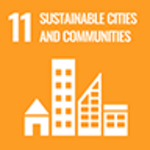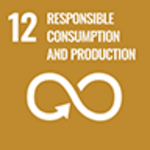
Kiyofumi Kurumizawa, Associate Professor
Affiliation: Graduate Faculty of Engineering / School of Engineering Graduate School of Engineering
Specialized field: resource recycling, concrete engineering
Research Keywords: Cement, Concrete, Sustainable Society
Alma mater: Matsumoto Fukashi High School (Nagano Prefecture)
Final academic background: Graduate School of Science and Engineering, Tokyo Institute of Technology
HP address:https://emr.eng.hokudai.ac.jp/
*This article was originally published in the 4th issue of "Frontiers of Knowledge" and has been re-edited for the web.
How did you start your research?
The reason why I started this research is because the laboratory I was assigned to when I was in the fourth year of university was researching concrete. When I entered university, I wanted to become an architect who could build buildings, so I enrolled in the Department of Construction. Do you know what concrete is made of? Concrete is made by mixing cement, water, sand and gravel. And as many of you may be misunderstanding, concrete is not mixed with water and dried to set. Cement and water react chemically to form new hydrates, which bind sand and gravel together and harden. Therefore, it is very important to control the chemical reaction between cement and water in order to improve the quality of concrete. You can see the scenery. This is done because the reaction does not proceed well unless water is supplied, and defects may occur if this is not done. Concrete is so profound that I have been conducting research related to concrete for nearly 20 years.
What kind of research are you doing now?
Many industrial wastes are currently used for concrete. For example, a lot of municipal waste may be used when manufacturing cement. Cement may also be mixed with fly ash from coal-fired power plants or ground granulated blast furnace slag from steel mills. Because it contains industrial by-products, its properties are different from ordinary cement-only concrete. Therefore, it is necessary to understand the physical properties of concrete using fly ash or ground granulated blast furnace slag. For that purpose, it is necessary to grasp the structure from the nano level, which is the size of hydrates, to the meter level, which is the structural calculation of concrete structures. Therefore, we are trying to understand these using a lot of the latest experimental equipment. The photograph shows a cross-sectional image of hardened cement paste, which is a hardened body made by reacting only cement and water, as seen with an electron microscope. The white areas are unreacted cement particles, the gray areas around them are hydration products produced by cement reaction, and the black areas are voids. The photo on the left shows a hardened product with a small amount of water, and the photo on the right shows a hardened product with a large amount of water.

Electron micrographs of hardened cement pastes with different water-cement ratios
(Left: 30% water-cement ratio, Right: 50% water-cement ratio, Figure size: 200 μm × 150 μm, white: cement particles, black: voids, gray: hydrated products)
If the amount of water is small, a lot of unreacted cement will remain, but the surroundings will be properly covered with hydration products. Conversely, many black voids are observed in the hardened material with a large amount of water. This will break if a strong force such as an earthquake is applied. In fact, comparing the compressive strength of these two hardened materials, it is known that the hardened material with less water has higher strength. Therefore, it is possible to predict macroscopic properties from microscopic observations. In this way, our laboratory is researching the prediction of macroscopic properties from the results of microscopic observations in the nano and micro regions. The electron microscope is one such tool, and we are also conducting research using the latest equipment.
What kind of research do you plan to do in the future?
I mentioned that concrete is made using cement, water, sand and gravel, but carbon dioxide is inevitably emitted when cement is produced. Because limestone (CaCO 3), which is the raw material of cement, is fired at a high temperature of nearly 1500°C (CaCO 3 →CaO + CO 2), carbon dioxide is always emitted. Therefore, we aim to manufacture cement-free concrete that does not use any cement. This technology is called Geopolymer Concrete, as opposed to Cement Concrete, which is commonly used today. Geopolymer Concrete is a technology that creates a solidified body by adding an alkaline stimulant such as sodium hydroxide to fly ash and ground granulated blast furnace slag, which are raw materials. Since this technology is not yet in full-scale use in Japan, we plan to conduct research on the hardening reaction mechanism and the durability of whether geopolymer concrete can be used in the long term in order to spread it. In the future, I would like to establish technologies and evaluation methods that appropriately recycle materials discharged from industry as new construction materials, and conduct research that will help build a recycling-oriented society. . I am conducting research with students every day, hoping that you will become a person who can contribute to society as a member of society.




















